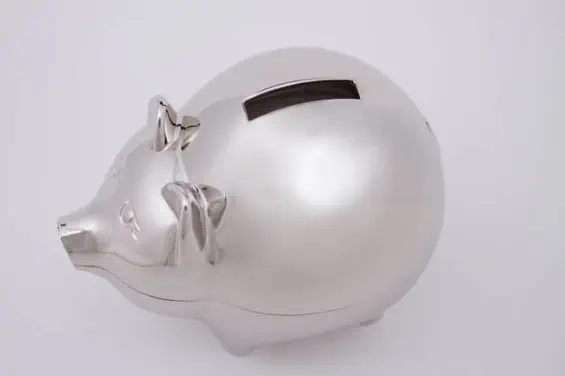When someone inquires about how much RRSP they should contribute to avoid paying taxes, three things come to mind.
They could be thinking about limiting the taxes they pay when they withdraw from their RRSP in retirement.
Alternatively, they may be concerned about the over-contribution penalty CRA levies when you put too much money in your RRSP account.
Lastly, they could also be considering how much RRSP is too big. Are they saving too much, and will the government end up with a chunk of their RRSP when they pass?
Let us dig into all three possibilities and how your RRSP contributions and taxes interact.
RRSP Taxes When You Receive Payments
RRSPs offer several benefits, including tax-free investment growth, tax-deductible contributions, and more.
When making contributions and investing in your RRSP, you don’t pay taxes on investment income earned, be it interest, dividends, or capital gains.
That said, when you withdraw from your RRSP, the amount is subject to taxation at your marginal tax rate.
Assuming you will be in a lower tax bracket in retirement, you could be better off investing in an RRSP than a TFSA.
For example, let’s assume you earn $95,000 and have a marginal tax rate of 43.40% (Manitoba). You contribute $10,000 to your RRSP each year for 30 years, and when you retire, your annual income is $60,000 with a marginal rate of 33.25%.
Your initial $10,000 contribution will grow as follows:
| TFSA | RRSP | |
| Income contributed | $10,000 | $10,000 |
| Taxes at 43.40% | $4,340 | $0 |
| After-tax contribution | $5,660 | $10,000 |
| Investment return/year | 7% | 7% |
| Number of years | 30 | 30 |
| Value of initial $10,000 investment in 30 years | $43,086 | $76,123 |
| Taxes at 33.25% in retirement | $0 | $25,311 |
| Net income after tax | $43,086 | $50,812 |
Because your marginal tax rate is significantly lower during retirement, the RRSP works better, and you keep more money in your wallet.
If we reverse our tax rate assumptions and your marginal tax rate is higher in retirement, below is what your first $10,000 pre-tax income contribution looks like.
| TFSA | RRSP | |
| Income contribution (pre-tax) | $10,000 | $10,000 |
| Taxes at 33.25% | $3,325 | $0 |
| After-tax contribution | $6,675 | $10,000 |
| Investment return/year | 7% | 7% |
| Number of years | 30 | 30 |
| Value of initial $10,000 investment in 30 years | $50,812 | $76,123 |
| Taxes at 43.40% in retirement | $0 | $33,037 |
| Value income after tax | $50,812 | $43,086 |
In this case, a TFSA could have served you better as you now pay higher taxes on your RRSP.
Your tax rate in retirement is just one of many factors to consider when choosing between an RRSP and a TFSA.
Other factors include the benefits that accrue from investing your tax refund (from claiming an RRSP deduction on your tax return), employer contribution matching, which can significantly boost your RRSP account, and the impact of RRSP income on other income-tested benefits.
So, are there ways to avoid paying taxes on your RRSP withdrawals?
Apart from taking money out for buying a home or for school expenses, you could avoid paying federal taxes on your RRSP if your withdrawal limits your total income to the basic personal amount (BPA) maximum. The BPA in 2023 is $15,000.

RRSP Over Contribution Tax
Overcontributing to your RRSP will cost you, and this is a tax you can easily avoid by keeping tabs on your contribution room.
A 1% monthly penalty is assessed on RRSP contributions that exceed your deduction limit by more than $2,000.
For example, if your RRSP deduction limit is $15,000 and you contribute $20,000, your RRSP over-contribution amount is:
$20,000 – ($15,000 + $2,000 buffer) = $3,000 excess contribution.
You will pay a 1% penalty tax each month on this excess contribution. Using the example above, this penalty is equivalent to $30/month or $360/year.
You can avoid paying the over-contribution tax by withdrawing the excess amount from your RRSP before the end of the month when the contribution was made.
When taxes are due, you must complete Form T1-OVP and send it to the CRA as soon as possible.
An additional late-filing penalty may be charged if you haven’t filed this form 90 days after the end of the tax year. The late-filing penalty is equivalent to 5% of the balance owing plus 1% of the balance owing every month (up to a maximum of 12 months).
RRSP Taxes After Death
Unless you have designated a qualified beneficiary for your RRSP, its assets are included in your final income tax return and taxed at your marginal tax rate.
However, if you have designated a spouse, your RRSP assets can be transferred to their RRSP account (this also applies to RRIFs), and taxes will remain deferred until withdrawals are made.
You could also defer taxes on your RRSP after passing by designating a financially dependent under age 18 or a financially dependent child at any age if they have a qualifying physical or mental impairment.
Learn more about RRSPs after death.
If you don’t have a beneficiary for your RRSP or would rather leave little to nothing for the tax man, you can factor this into the size of your RRSP, your withdrawals in retirement, and how you use your TFSA.




